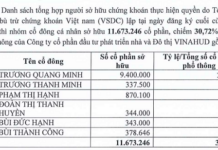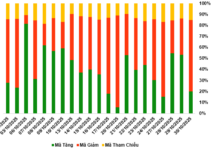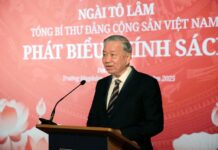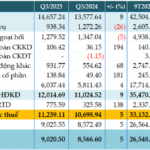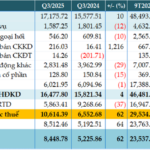
According to the International Monetary Fund (IMF), Laos has a GDP of approximately $16 billion, ranking 9th out of 10 ASEAN countries. Its per capita GDP stands at around $2,000, also placing it 9th in the ASEAN bloc.
As reported by the Vientiane Times, Laos aims to achieve a per capita GDP of approximately $2,983 and an average income of around $2,800 by 2030. The country is actively engaging in international cooperation to meet this ambitious goal.
Notably, one of Laos’ key strategies to boost its economy by 2030 involves expanding transportation and logistics connectivity within the region. This includes constructing highways to link key provinces and the capital, Vientiane, with China and Hanoi, Vietnam. Additionally, detailed feasibility studies are underway for railway projects connecting Vientiane to Vietnam’s Vung Ang seaport in Ha Tinh province. Through collaboration with Vietnam, Laos is also exploring seaport operations, establishing new economic corridors.
Within ASEAN, Laos is the only landlocked nation, situated west of Vietnam. However, through its partnership with Vietnam, Laos has gained access to a seaport, facilitating international integration and streamlining imports and exports.
On April 28th, the Lao-Vietnam International Port Joint Stock Company inaugurated Berth No. 3 at the Lao-Vietnam International Port in the Vung Ang Economic Zone, Ky Anh district, Ha Tinh province.
Berth No. 3, approved by the Ha Tinh Economic Zone Management Board, features a 225-meter quay capable of accommodating vessels up to 45,000 DWT. With an annual capacity of 2.15 million tons, the berth occupies 43,928 square meters of land and 42,000 square meters of water area.
The launch of Berth No. 3 enhances the economic and social infrastructure of both Vietnam and Laos, meeting the growing demand for goods transportation. Combined with Berths No. 1 and No. 2, the port’s cargo throughput is expected to rise from 4.5 million tons to over 6.5 million tons annually.
This development also increases the region’s investment appeal, laying the groundwork for improved import/export operations, transit cargo, trade, and cooperation with Laos and northeastern Thailand.
According to the Government News, this milestone not only signifies a new phase for the Lao-Vietnam International Port Joint Stock Company but also underscores the deep and effective implementation of commitments between the Vietnamese and Lao governments. These commitments focus on developing Berths No. 1, 2, and 3 at Vung Ang Port, enabling Laos to access international markets via seaports. This initiative strengthens the economic ties and special bond between Vietnam and Laos, reflecting the trust and solidarity between the two nations.
This project is a significant step toward transforming the Vung Ang Economic Zone into a dynamic economic hub, attracting investment and driving socioeconomic development in Ha Tinh province, the surrounding regions, and beyond. For Laos, the port opens a new gateway to maritime trade, reduces logistics costs, and enhances economic competitiveness. It also fosters connectivity with northeastern Thailand and the Greater Mekong Subregion.
The project prioritizes modern technology, digital transformation, and enhanced management and operational capabilities. Efforts are underway to expand partnerships with domestic and international stakeholders, broaden market reach, increase orders, and improve overall business efficiency.
As highlighted by The Laotian Times, this development strengthens trade and transport links between Laos and Vietnam, providing critical infrastructure to support Laos’ economic growth.
Clarifying Insolvency Criteria and Overdue Debt Standards: A Parliamentary Inquiry
On the morning of October 23rd, the National Assembly engaged in group discussions regarding the amended Bankruptcy Law. Numerous delegates expressed strong support for the revisions, aiming to enhance the legal framework amidst the annual exit of tens of thousands of businesses from the market.















